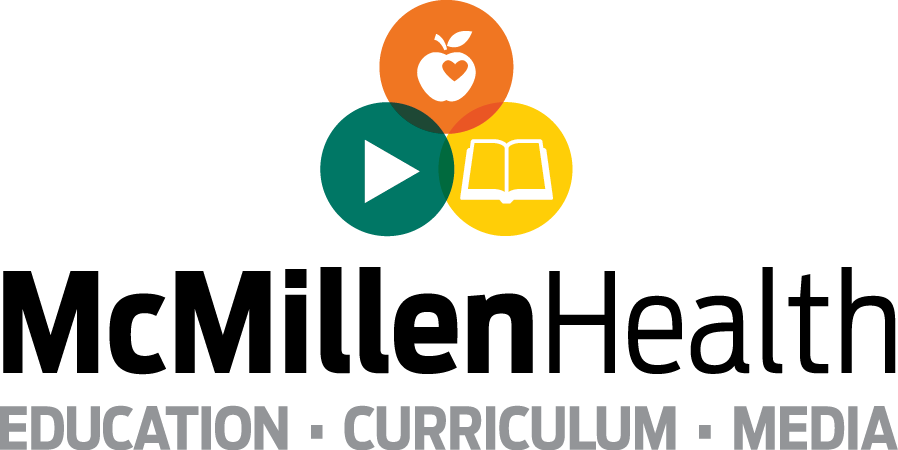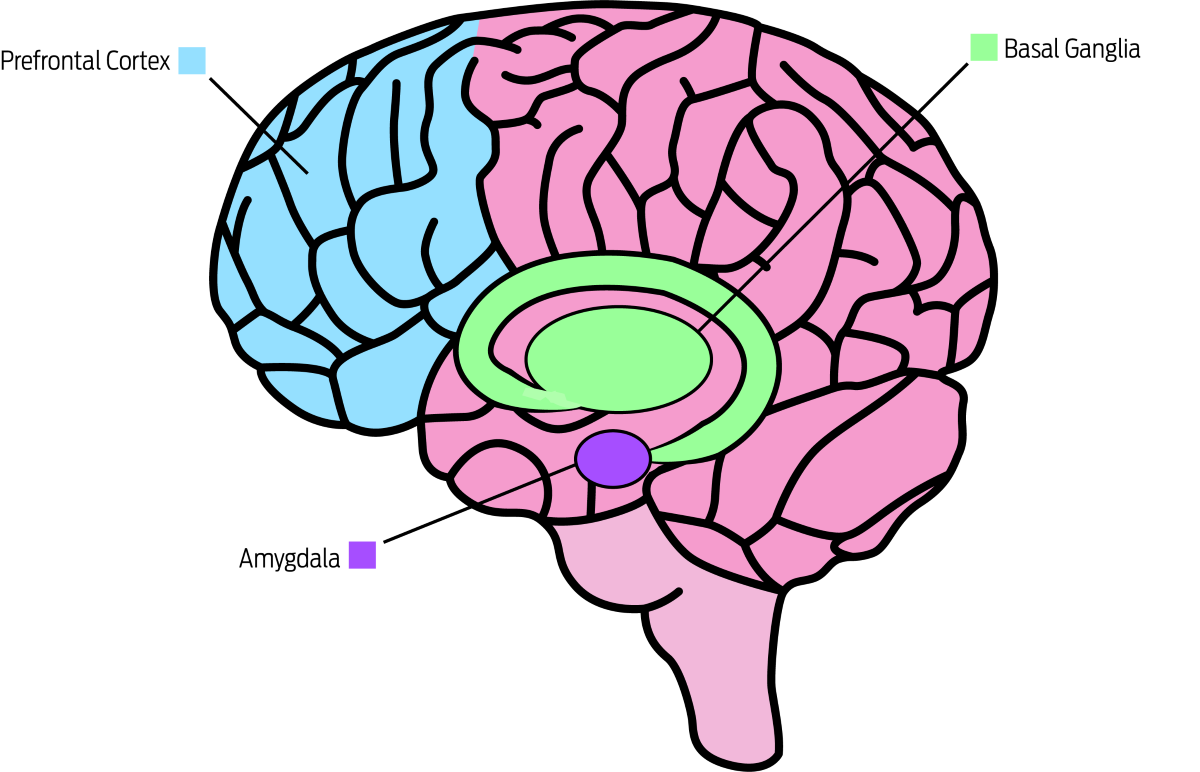5 Questions about Substance Use and the Brain
Learning how substances affect the brain helps us understand substance use disorders, commonly called addictions. Substances like drugs, alcohol, or tobacco change how the brain works. Learning about substance use empowers us to make healthier choices.
McMillen Health's substance use prevention programs teach students the facts about how drugs and alcohol affect our bodies and our lives.
What is Substance Use Disorder/Addiction?
A substance use disorder (SUD), commonly called addiction, is a chronic medical condition. SUD is not a moral failing or a lack of willpower.
When talking about addiction, the words you use matter.
Instead of saying someone is an “addict,” it is better to say someone has a substance use disorder.
According to the National Institute on Mental Health: "A substance use disorder (SUD) is a mental disorder that affects a person's brain and behavior, leading to an inability to control their use of substances such as legal or illegal drugs, alcohol, or medications."
Someone with SUD knows using substances has negative consequences, but they still try to get more of the drug. The more they use a drug, the more severe their SUD gets. This increases their risk of fatal or non-fatal overdoses.
Some substances, like opioids or methamphetamine (meth), are highly addictive. A person can feel dependent after just a few uses.
How Does Substance Use Affect the Brain?
Alcohol and drugs are chemicals that change the nervous system, which includes our brain. Substance use makes the brain release chemicals that change how we think and feel.
Substances make it hard for each part of the brain to do its job. For example, alcohol affects the prefrontal cortex, the cerebrum, and the cerebellum. Even a few drinks can affect a person's ability to make safe choices (prefrontal cortex), speak clearly (cerebrum), or balance (cerebellum).
Substance use has short-term and long-term effects. A long-term effect is substance use disorders/addiction.
How Do Drugs Cause Addictions?
Repeated and increased substance use changes how the brain works.
Let's look at alcohol as an example again. When someone drinks, the brain releases "feel good" chemicals like dopamine and serotonin. The brain connects alcohol with feeling good. Feeling good becomes motivation to keep using alcohol.
Drinking more alcohol more often makes the brain release more "feel good" chemicals. But more is not better.
Over time, the brain adapts to the increased chemicals. A regular dose of dopamine and serotonin is not enough to feel good. The brain starts craving even more alcohol, more often.
A person's desire for substances can be overwhelming. They will have withdrawal symptoms if they stop or reduce their use. At this point, someone may be diagnosed with a substance use disorder by a medical professional.
Remember, some substances, like opioids or methamphetamine, are highly addictive. A person's brain can adapt and crave the drug after a few uses.
What Do Addictions Do to the Brain?
Now we understand how substance use can lead to SUD/addiction. But how does SUD affect parts of the brain?
Areas of the Brain Influence Addiction
Three areas of the brain that influence addiction are the basal ganglia, amygdala, and prefrontal cortex.
Basal Ganglia
The basal ganglia help us form habits. They are responsible for the reward system in our brains. "Feel good" chemicals like dopamine are positive reinforcement to learn and develop habits.
Since alcohol and drugs make the brain release these chemicals, substance use can quickly become a habit.
Amygdala
The amygdala helps us respond to emotions like fear, stress, and discomfort. In life-threatening situations, the amygdala is responsible for our fight-or-flight response.
Someone with SUD has withdrawal symptoms when they stop or reduce substance use. Withdrawal symptoms include shaking, sweating, weakness, fatigue, depression, anxiety, and much more. Withdrawal is not just uncomfortable; it can also be dangerous and life-threatening.
The amygdala can't consider long-term consequences. It wants to protect us, so its goal is to stop withdrawal symptoms. The quickest way to do that is to use substances. The amygdala sends powerful messages throughout the brain. Soon the brain is hyper-focused on using substances.
Prefrontal Cortex
The prefrontal cortex is responsible for critical thinking and decision-making. It can also consider the long-term consequences of substance use.
When working correctly, the prefrontal cortex helps us make healthy, responsible choices. Substance use damages the prefrontal cortex, and repeated substance use doesn't give the brain time to heal.
If the prefrontal cortex is damaged, so are decision-making skills. The prefrontal cortex stops considering consequences. Instead, it focuses on the rewarding feelings of substance use.
Substance use disorder/addiction is a chronic medical condition. Even when someone wants to make healthier choices, their brain sends powerful signals to keep using substances.
Can the Brain Recover from Addiction?
Let's start by defining recovery.
SAMHSA defines recovery as "A process of change through which individuals improve their health and wellness, live a self-directed life, and strive to reach their full potential."
Every person's recovery journey is personal. Some people with SUD define recovery as not using substances. For others, recovery is taking steps to improve their health and life. Most people in recovery feel successful when they can handle stress or challenging situations without using substances.
Treatments for Substance Use Disorders
SUD is a chronic condition. Treatment can manage the disorder but not cure it. Treatment helps a person reach their definition of recovery.
Usually, the best treatment is holistic. This means a treatment plan with counseling, support services, and medication-assisted treatment (MAT). It's normal for someone in treatment to learn they have other related mental health conditions too. Treating these mental health conditions helps treat SUD.
Some substance use disorders require medication. MAT is usually considered a prescription medication for opioid use disorder. However, MAT includes nicotine patches or medicines to reduce alcohol cravings.
There are in-patient and out-patient services for substance use disorders. Peer recovery coaches, support groups, and online programs can also provide support during recovery.
Substance Use Prevention Programs
Using high-tech media rooms, our educators can reach classrooms anywhere with an internet connection. We offer a variety of drug, alcohol, and tobacco prevention programs for students of all ages.
If you want to learn more about McMillen Health's substance use prevention programs, please visit our program guide or call us at 1-888-240-7268.
Youth Substance Use Prevention Programs
Preschool & Kindergarten:
Elementary:
Middle School:
High School:
Adult Substance Use Prevention Programs
Prenatal & Postnatal Substance Use Prevention Programs
Ready to schedule a program? Click here.




